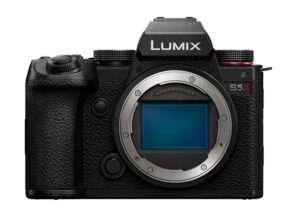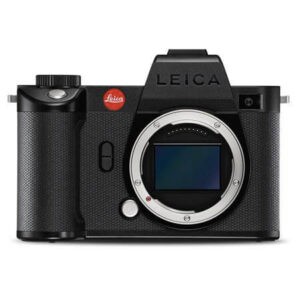Best L-mount mirrorless cameras from Panasonic, Sigma and Leica
Last update: 04/19/2024
Our blog continues to grow thanks to you, our readers. This blog may contain affiliate links, which means we can earn a small commission if you make a purchase through them, at no extra cost to you. This helps us to continue to bring you more and support our work!
In 2018, Panasonic has announced plans to start working on full frame sensor cameras. Until then, the brand only offered micro 4/3 cameras. In fact, on this subject, I invite you to check out our full article explaining everything you need to know about sensor size. As a long time Leica’s privileged partner, Panasonic also announced that these full frame mirrorless will be developed in collaboration with the mythical Germanic brand, Leica, in association with Sigma.
This triple alliance has several interests for the 3 brands. Panasonic and Sigma benefit from the L-mount developed by Leica, while Leica will be able to enjoy a greater visibility on the “popular” market (even if, between us, it does not change their prices…). The three brands also benefit from the lenses already produced by Leica and those produced later by Panasonic and Sigma. In fact, I summarized all the L-mount lenses in a separate article.
Indeed, if Panasonic was able to receive help from Olympus to design a complete range of micro 4/3 lenses (complete listing of everything that exists for micro 4/3) and did not really need to be competitive immediately in this format at the time, given the lack of attraction for mirrorless cameras, it is not the same in full frame in a market where Sony is already well established and where Nikon and Canon arrived in strength at the same time as Panasonic.
As Panasonic and Sigma do not offer APS-C cameras and those offered by Leica are really expensive and rather discreet in stores, I will mainly focus here on full frame cameras.
01/18/2023
- Addition of the two new Full frame Panasonic mirrorless camera, including AF phase detection for the first time : the Panasonic S5 II and Panasonic S5 II X
Since I published this page, I’ve added a brand new page listing all current L-mount Cine lenses.
Panasonic Full Frame Cameras
PANASONIC S5
The S5 is probably the most interesting of the Panasonic full frame cameras, competing directly with the Sony A7III/A7C, Nikon Z6 and Canon R6. Like Sony and Nikon, it has a 24MP stabilized sensor, but with a particularity as it does not have a low-pass filter, allowing a higher level of detail. However, the only other brand to have removed it on a sensor of this size and definition is… Leica! Its 7 frames per second burst is not the fastest compared to Sony’s 10 or Canon’s 20, but should not be very limiting outside of action photography. About this, its AF has 225 AF points, but Panasonic uses a contrast-only technology, which does not make them the ideal brand for “sport” fields. Its ISO range is from ISO 100 to 51200 with a native dual-ISO, bringing a boost to the sensor at ISO 640 and 4000.
Compared to the previously released S1s, Panasonic has been listening to the critics and reworked its design to offer a more compact and lighter body, similar to what the competition is offering in this category. It also has all the current connectivity features, Wifi and Bluetooth, and allows filming in 4K 60p with 1.5x cropping and Full HD 180p. It also offers a high definition photography mode, allowing you to output 96MP shots under ideal conditions (tripod and fixed subject, mainly). The electronic viewfinder starts to be below the competition with its 2.36MP, but remains of good level. The 470-frame battery life is decent compared to Nikon and Canon, but not as good as Sony’s.
Its price under 2000€, with regularly attractive discounts, allows it to be, in my opinion, among the best current cameras.
PANASONIC S1 and S1R
I decided to put together here the S1 and S1R because they share a very similar technical sheet, although they are at very different prices. In my opinion, their dimensions and weight are important disadvantages compared to the competitors. Both cameras have the same AF as the S5 and share the same 5.76MP electronic viewfinder, the same 9fps burst, the same 360 frame battery life and offer 4K 60p. They also both have a stabilized sensor.
What differentiates the 2 cameras are: the definition of the sensor, the S1 offering 24MP images (high definition mode at 96MP) with a range of 100 to 51200 ISO native while the S1R offers 47MP images (high definition at 187MP) with a range of 100 to 25600 ISO; the 4K 60p without crop for the S1 and a 1.5x crop for the S1R; the price of the S1R which is 50% higher than the S1.
If the S1 can be attractive for its 2400€ price, its physical characteristics and its slower AF by contrast and more easily in trouble in low lights make it less interesting than some competitors, like the Sony A7R IIIa or the Canon R6. The S1R has all the same disadvantages, in addition to costing 3600€. Here again, the A7R IIIa, or even the A7R IVa or the Nikon Z7 II seem to me to be better choices.
PANASONIC S1H
The characteristics of the S1H could have led me to group it with the S1 and S1R, but it is somewhat more video oriented and some of its features make it stand out enough to dedicate a special paragraph to it. Although it offers the same definition and the same native ISO range as the S1, it does not have the same sensor since Panasonic chose to add a low-pass filter. If, for photography, this filter reduces the amount of detail provided by the lens, for video, it is especially interesting to reduce the moiré (repetitive patterns which blend together).
As a video specialist, it obviously offers 4K 60p but also slightly higher definitions (6K 24p), an impressive number of video rates and formats, and obviously a sensor stabilization. If you accept the extra weight and millimeters in addition to the already imposing S1 and S1R for professional video use, the S1H can be an excellent choice.
There is again the same AF, burst and 5.76MP viewfinder as the other S1s, as well as the same €3600 price tag of the S1R.
Panasonic S5 II et S5 II X
Well, at last! At the beginning of 2023, Panasonic announced its S5 II and S5 IIx, and they finally decided to incorporate the technology that everyone has been waiting for years from Panasonic: a phase detection autofocus. Indeed, since its first micro 4/3 hybrid cameras in 2008, Panasonic only relied on a contrast detection AF which is done directly on the sensor. The latter is accurate and even quite fast. The most recent Panasonic cameras prove it since they took the concept very far (inevitably since it was the only AF available on their cameras). However, it remained very erratic because it was subject to a lot of pumping and less efficient in low light because of the lack of contrast. On the contrary, the other mirrorless brands have been using phase detection together with contrast detection for several years. In fact, DSLR cameras were already using phase detection since 1985, which was necessary anyway since with an optical viewfinder, the sensor can’t detect a contrast if it doesn’t see anything with a mirror in front. In film photography, the sensor was not digital, so there was no risk of using contrast.
If we find many common points between the S5 II and its precursor, the phase detection AF is the biggest addition, although it is not the only one. The electronic shutter speed is now 30 fps, which puts it behind the Canon R6 II and its 40 fps, but ahead of all the others in this price range. However, keep in mind that on sensor cameras that do not take advantage of memory stacking like the R6 II, A7 IV or Z6 II, the use of electronic shutter causes undesirable effects, including distortion, banding and rolling shutter. The EVF improves in definition and equals the other cameras of the same price with 3.68M dots, with a magnification of 0.78x thus similar to the A7 IV and Z6 II. Only the Canon offers a magnification of 0.76x, a little bit less comfortable, but in use the difference is minimal. The rear screen also gains in definition. It uses the S5’s 24MP sensor, which is the usual definition for cameras of this type since only the A7 IV offers more with 33MP. Its ISO sensitivity range extends from 100 to 51200 ISO natively, also classic for this type of full-frame camera today.
The sensor is stabilized and is very efficient, the brand being well known in this field. The mechanical burst rate reaches 9ips but only in AF-S mode, decreasing to 7ips in AF-C mode. Here again, Panasonic is familiar with the fact. The AF, the most significant evolution of this S5 II, proves to be much more comfortable than its predecessor with new detection of subjects and, if it does not yet match the current leaders that are Sony and Canon, it is not far from it and does a little better than Nikon. Nikon has not yet decided to transpose part of the Z9’s AF onto their Z6 and Z7. When it will be the case, the improvement will have to be watched because the Z9 is very well rated.
When it comes to video, Panasonic rarely disappoints, having a strong know-how in this field. We can therefore count on all the exclusive video functions of Panasonic, such as waveform or LUTS preview, and many other options to simplify filming. The S5 II offers up to 6K, 4K50/60p is still cropped at 1.5x like the Z6 II and A7 IV. Only the R6 in this range are not affected by this crop but it prevents overheating, facilitates corrections and offers a more powerful digital stabilization, although it remains regrettable.
The standard autonomy is not fantastic. It is still far from Sony on this point, but Panasonic offers on most of its slightly high-end cameras very effective power saving options that multiply it, and the S5 II is one of them. Finally, on memory slots, Panasonic chose to stick to SD cards while some competitors are moving to at least one slot for faster CFExpress, especially for high definition and high frame rate video recording. The 6K recording on the S5 II is done by external recorder.
As for the S5 II X, which comes out about 6 months later for 2600€, it is identical on most points. It is especially dedicated to those wishing to be able to film in ProRes or RAW and to stream live, so it is intended for specific users. This is the great strength, in my opinion, of the S5 II, by not including some video options that few people use (or that direct them to more specialized cameras) Panasonic was able to offer it at a very interesting price. We’ll have to see if producing two separate cameras instead of one will be a winning strategy in the long run.
L-mount Leica Full Frame Cameras
Here are the only two full frame Leica cameras using the L mount. Not to be confused with M-mount Leica cameras like the Leica M10 and M11.
LEICA SL2 and SL2-S
2 more cameras with very similar characteristics since these cameras are physically clones with the same dimensions and weight. Their AF is identical, as well as their 5.76MP electronic viewfinder, their 370 frames autonomy and their burst which is almost the same.
They differ again by their sensor, 24MP for the SL2-S up to ISO 100000 when the SL2, released earlier, offered 46.7MP up to ISO 50000. Both are stabilized. They both offer 4K 60p but the SL2 can go up to 5K 30p and 180p in Full HD. Perhaps an inspiration from Panasonic, Leica seems to have wanted to offer a more photography-oriented body with the SL2-S and video oriented with the SL2.
Obviously, the other main difference is the price since the SL2-S is at 4600€, a price already high even for a full frame, while the SL2-S is above 6000€. If Leica is a legend, we can say that their prices are also legendary!
SIGMA fp and fp L
After the introduction of Sigma in the L-mount alliance, they decided to release new mirrorless cameras with this mount to benefit from Leica expertise and Leica / Panasonic lenses. They then decided to release original cameras, rather video oriented, which can brag to be the lightest and most compact in this format. The two cameras are physically identical and weigh the same. However, there are some relatively important differences between both models.
The first one is obviously the sensor, 24.6MP without low-pass filter on the Sigma fp and 60MP with low-pass filter on the fp L (a very surprising choice). The fp has a contrast detection AF only and a 18 frames per second burst rate, while the fp L has a hybrid phase/contrast AF but a lower burst of 10 frames per second. Again, a bit surprising since the higher burst would be more interesting with a faster hybrid AF.
Although they seem to be video oriented, they do not offer 4K 60p. They don’t have a native electronic viewfinder either, since you have to buy the EVF-11 separately for 650€ (sometimes offered as a pack with the body for 500€).
Both cameras are priced around 2000€, which would seem to be a good price for this brand, but the competition at this price is very tough and offers more complete performances.
Characteristics table comparison
Here are all the main features to know about the above mentioned cameras.
| Camera | ISO | Weight | Size | Range | Focusing points | Burst rate (fps) | Autonomy | Wifi (BT) | Video | MP |
|---|---|---|---|---|---|---|---|---|---|---|
| Panasonic S5 | 100 – 51200 (204800) | 714 g | 132.6 x 97.1 x 81.9 mm | Expert | 225 | 7.0 fps | 470 | yes (yes) | 4K 60p | 24.2 MP |
| Panasonic S1 | 100-51200 (204800) | 1017 g | 148.9 x 110 x 96.7 mm | Semi-Pro | 225 | 9.0 fps | 360 | yes (yes) | 4K 60p | 24.2 MP |
| Panasonic S1R | 100-25600 (51200) | 1016 g | 148.9 x 110 x 96.7 mm | Semi-Pro | 225 | 9.0 fps | 360 | yes (yes) | 4K 60p | 47.3 MP |
| Panasonic S1H | 100-51200 (204800) | 1164 g | 151 x 114.2 x 110.4 mm | Semi-Pro | 225 | 9.0 fps | 400 | yes (yes) | 4K 60p | 24.2 MP |
| Panasonic S5 II | 100-51200 (204800) | 740 g | 134.3 x 102.3 x 90.1 mm | Semi-Pro | 779 | 9.0 fps | 440 | yes (yes) | 6K 30p | 24.0 MP |
| Panasonic S5 II X | 100-51200 (204800) | 740 g | 134.3 x 102.3 x 90.1 mm | Semi-Pro | 779 | 9.0 fps | 440 | yes (yes) | 6K 30p | 24.0 MP |
| Leica SL2 | 100-50000 | 840 g | 146 x 107 x 83 mm | Semi-Pro | 225 | 10.0 fps | 370 | yes (yes) | 4K 60p | 46.7 MP |
| Leica SL2-S | 100-100000 | 840 g | 146 x 107 x 83 mm | Semi-Pro | 225 | 9.0 fps | 370 | yes (yes) | 4K 60p | 24.6 MP |
| Sigma fp | 100-25600 (102400) | 370 g | 112.6 x 69.9 x 45.3 mm | Expert | 49 | 18.0 fps | 280 | yes (yes) | 4K 30p | 24.6 MP |
| Sigma fp L | 100 - 25600 (102400) | 375 g | 112.6 x 69.9 x 45.3 mm | Expert | 49 | 10.0 fps | 210 | yes (yes) | 4K 25p | 60 MP |
Which L-mount mirrorless camera to choose?
Although Leica and Sigma offer interesting things, the price of the first and the characteristics of the second encourage me to point you towards Panasonic if you are really interested in the L-mount. The important competition makes it difficult to choose this mount since we generally find better characteristics, in particular regarding autofocus, from Sony, Canon or even Nikon.
But if you stay on this L-mount, the Panasonic S5 seems the most balanced with the best performance/price ratio, especially for its physical characteristics. It’s very versatile, both for photos and videos.
For video specialists, the S1 and S1H seem to be the best choices. The first one is obviously advantaged by the fact that it costs little more than the S5 and much less than the S1H.
For high definition, the S1R is the obvious choice with its 47MP sensor, although its price is quite high when you see that the Sony A7R IIIa and its 42MP is almost the same price as the S1, so much cheaper than the S1R.
If you’re looking for a sporty camera, you’ll have to look for another mount or wait until Panasonic decides to add phase AF and possibly stacked sensors to improve performance.
To go further and see what the other brands offer, I invite you to check out these articles presenting the E-mount cameras from Sony, Z-mount cameras from Nikon or RF-mount cameras from Canon.
See you soon,

Written by Sylvain PONS
I've been passionate about photography since 2010, learning as I went along. Today, I dedicate myself to guiding others in their choice of camera gear and sharing a variety of tips to improve their photography skills.
Despite our care, a mistake may have slipped into this article. If you find any, please don't hesitate to let us know so we can correct it as soon as possible and keep our information up-to-date!
















